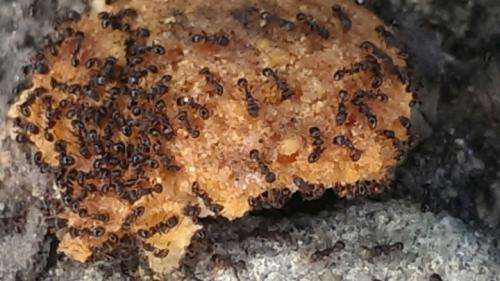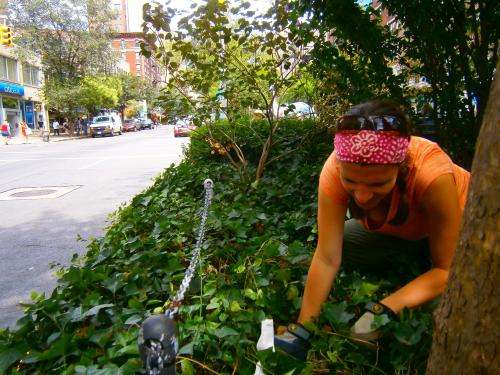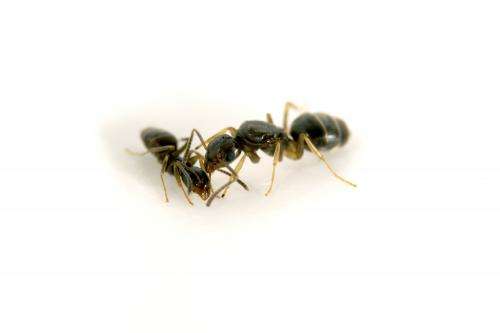High ant diversity underfoot in urban environments

Cities have more species diversity than you'd expect. A study of ants in Manhattan found not only a wide range of species, but also significant differences in the levels of biodiversity in different urban areas.
"People don't think of cities as having ecology, and urban environments haven't been well studied," says Dr. Amy Savage, a postdoctoral biological sciences researcher at North Carolina State University and lead author of a paper on the work. "But protected areas, such as national parks, have been well studied. So we wanted to see if the theories developed to predict biodiversity in protected areas could also predict species diversity in urban environments."
To explore this issue, the researchers decided to focus on ants, partly because ants are ecologically important, but also because the ant species found in a given area can tell you a lot about its environment.
The researchers collected ant samples at approximately 50 sites in Manhattan, including street medians, urban forests and recreational areas in city parks. They examined each site thoroughly, turning over rocks and sifting through leaf litter.
The biggest surprise to the researchers was that the type of urban habitat was more important in determining ant diversity than the proximity between habitats. Sites in urban forests that were far apart had more similar species than an urban forest site and a recreational area site that were right next to each other.
"We were also surprised at the number of exotic (or non-native) species that we found," Savage says. "We thought there would be more exotic species in high-stress environments, like street medians. But we found that medians didn't have any more exotic species than urban forests."

In fact, the researchers found that the city had much more diversity than they expected.
"It's amazing how much diversity we found," Savage says. "We found 42 different species across all the sites."
Researchers also found that the existing diversity theories from protected areas were fairly accurate at predicting the levels of diversity in urban spaces.

"Existing theories argue that chronic stresses would adversely impact species diversity, and that's what we found," Savage says. High-stress areas had much less diversity than lower stress areas.
For example, the researchers found only 21 different species on high-stress street medians, but 32 different species in the less stressful urban forests.
"This tells us that urban ecosystems are complex and deserve future study – which could not only inform our understanding of urban ecology, but also our understanding of ecology as a whole," Savage says. "The good news is that it also tells us that existing biodiversity theories can help to guide that future work."
More information: Savage, A. M., Hackett, B., Guénard, B., Youngsteadt, E. K., Dunn, R. R. (2014), "Fine-scale heterogeneity across Manhattan's urban habitat mosaic is associated with variation in ant composition and richness." Insect Conservation and Diversity. doi: 10.1111/icad.12098
Provided by North Carolina State University

















